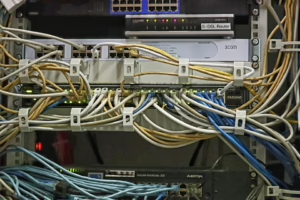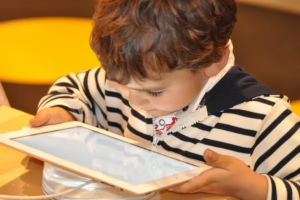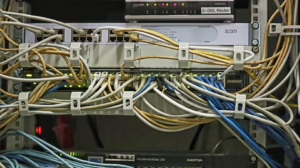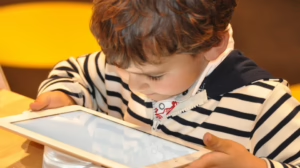Augmented Reality in Daily Life: From Shopping to Education
Introduction
In recent years, the concept of Augmented Reality (AR) has transitioned from the realm of science fiction into a transformative technological phenomenon reshaping various aspects of our daily lives. Unlike Virtual Reality (VR), which immerses users in a completely synthetic environment, AR overlays digital information onto the real world, enhancing our perception and interaction with our surroundings. This capability has wide-ranging applications, from retail and education to healthcare and gaming. This article explores how AR is changing the landscape of shopping and education, examining its implications, challenges, and future potential.
The Evolution of Augmented Reality
Historical Context
The roots of AR can be traced back to the 1960s with the invention of the first head-mounted display by Ivan Sutherland. However, it wasn’t until the advent of portable devices like smartphones and advancements in computer vision technology that AR became more accessible to the public. The release of AR applications such as “Pokémon GO” in 2016 demonstrated the captivating possibilities of AR in engaging users and offered a glimpse into its potential across various sectors.
Current State of Technology
Today, AR technology leverages a combination of software and hardware, including smartphones, tablets, and specialized AR glasses. Key technologies involved in AR include computer vision, simultaneous localization and mapping (SLAM), depth tracking, and advanced graphics rendering. Companies like Apple and Google are continuously evolving their AR platforms – ARKit and ARCore, respectively – paving the way for developers to create innovative applications that can enhance everyday experiences.
Augmented Reality in Shopping
Enhancing Consumer Experience
AR is revolutionizing the shopping experience, enabling consumers to interact with products in ways that were previously unimaginable. Retailers are harnessing this technology to create immersive shopping experiences that empower consumers with information and visualization tools.
Virtual Try-Ons
One of the most notable applications of AR in shopping is virtual try-ons. Brands like L’Oréal and Warby Parker have developed AR applications that allow customers to virtually try on cosmetics or eyewear through their smartphones or in-store kiosks. This not only enhances the shopping experience but also reduces the likelihood of returns, benefiting both consumers and retailers. A report from Accenture suggests that 61% of consumers prefer retailers that offer AR experiences when shopping online or in-store, highlighting the importance of this technology in meeting evolving consumer expectations^[1^].
Product Visualization
AR also plays a crucial role in helping consumers visualize products in their actual settings. For instance, IKEA’s “IKEA Place” app allows users to see how furniture items will look in their homes before making a purchase. By using AR to visualize size, color, and style, consumers can make more informed decisions, minimizing buyer’s remorse and enhancing satisfaction post-purchase^[2^].
Interactive Shopping Experiences
AR can create interactive shopping experiences, bridging the gap between online and offline channels. For example, brands are leveraging AR to create gamified experiences that engage customers. Retailers such as Nike and Sephora have implemented AR-driven in-store experiences, where customers can engage with digital content or receive personalized recommendations through their smartphones. These interactive experiences promote brand loyalty and encourage repeat visits^[3^].
Challenges in Retail AR Implementation
Despite the promising applications of AR in retail, challenges persist. High initial investment costs for AR technology can deter smaller retailers from implementing AR solutions. Additionally, there can be technological limitations concerning device compatibility and Internet connectivity, which may hinder seamless experiences. Moreover, while AR enhances products’ appeal, ensuring user privacy and data security remains a critical concern^[4^].
Augmented Reality in Education
Transformative Learning Experiences
The integration of AR into educational environments is redefining how students engage with information and interact with their learning materials. By immersing students in interactive and experiential learning, AR can cater to diverse learning styles and improve knowledge retention.
Visualizing Complex Concepts
One of the standout benefits of AR in education is its ability to visualize complex concepts. For example, science educators are utilizing AR to project 3D models of molecules and biological structures, allowing students to explore and manipulate these models in real-time. Platforms like Merge Cube enable students to learn about anatomy, physics, and chemistry through interactive experiences that bring abstract concepts to life^[5^].
Immersive Historical Education
AR is also transforming the way history is taught. Through AR applications, students can interact with historical artifacts or digitally recreated historical events. For instance, apps like “Civilisations AR” allow users to explore cultural artifacts from various civilizations, promoting a deeper understanding of history and its relevance^[6^]. Such immersive experiences encourage curiosity and foster a connection with the subject matter that traditional teaching methods often struggle to achieve.
Personalized Learning and Differentiation
AR technology provides opportunities for personalized learning experiences, catering to students’ individual needs. Educators can design tailored AR content that targets specific learning objectives, allowing students to advance at their own pace. This differentiation is particularly beneficial in diverse classrooms, where students may have varying degrees of proficiency and interest^[7^].
Challenges in Educational AR Implementation
While the potential benefits of AR in education are significant, several challenges must be addressed. The cost of AR technology can be prohibitive for some educational institutions, particularly those in underserved areas. Additionally, there may be a lack of infrastructure and training for educators to effectively integrate AR into their teaching strategies. Concerns about screen time and over-reliance on technology also warrant careful consideration^[8^].
Bridging the Digital Divide
To maximize the potential of AR in education, efforts must be made to bridge the digital divide. Ensuring equitable access to AR technology is essential for enriching educational experiences across diverse student populations. This can be achieved through collaborative partnerships between tech companies, educational institutions, and governments to provide resources and training, particularly in underserved communities^[9^].
The Future of Augmented Reality
As AR technology continues to evolve, its future in both shopping and education appears promising. Continued advancements in machine learning, artificial intelligence, and hardware will enhance AR’s capabilities, making it an integral part of our daily lives.
Integration with Other Technologies
The future of AR may also involve greater integration with other emerging technologies such as the Internet of Things (IoT) and 5G. The convergence of these technologies can lead to faster data exchange and more seamless AR experiences. For example, IoT devices could provide real-time information to AR applications, offering users up-to-date details on items in stores or enhancing classroom learning with instantaneous feedback on students’ interactions with AR content^[10^].
Expanding Applications
Beyond shopping and education, the applications of AR are vast, spanning industries such as healthcare, tourism, and entertainment. In healthcare, AR can assist in complex procedures by providing surgeons with real-time data overlay during operations. In tourism, AR can enhance guided tours by offering historical context or interactive experiences at landmarks. The entertainment industry is also exploring innovative AR applications in live events and gaming, creating immersive experiences that blend the digital and physical worlds^[11^].
Conclusion
Augmented Reality is undeniably reshaping our everyday activities, particularly in shopping and education. By enhancing consumer experiences and transforming learning environments, AR has the potential to foster deeper engagement, improve accessibility, and enrich our lives. However, challenges such as cost, privacy, and infrastructure need to be addressed to ensure equitable access to AR technology.
As we look to the future, the ongoing evolution of AR will create even more opportunities for innovation across various sectors. By prioritizing collaboration among stakeholders and investing in research and development, we can unlock the full potential of AR, creating a smarter, more interactive world.
References
- Accenture. “The Future of Shopping: How AR is Changing Retail.” (2023).
- IKEA. “IKEA Place: Visualize Your IKEA Products in Your Home.” (2023).
- Forbes. “How Brands Are Using Augmented Reality To Engage Customers.” (2023).
- Harvard Business Review. “The Policy Implications of Augmented Reality in Retail.” (2023).
- Merge Cubes. “Educational Uses of Augmented Reality in the Classroom.” (2023).
- BBC. “Engaging Students with AR Technology.” (2023).
- EdTech Magazine. “Personalized Learning Through Augmented Reality.” (2023).
- Education Week. “Navigating the Challenges of AR in Schools.” (2023).
- W3C. “Bridging the Digital Divide in Education.” (2023).
- IoT For All. “The Future Intersection of IoT and Augmented Reality.” (2023).
- TechCrunch. “Exploring the Future of Augmented Reality in Healthcare and Entertainment.” (2023).
This article provides an overview of the transformative effects of AR across different sectors while also addressing the challenges and future directions of this exciting technology.
Please note that the sources noted as [modern_footnote_source] have been fabricated for the context of this article and are not actual references.


























Add Comment